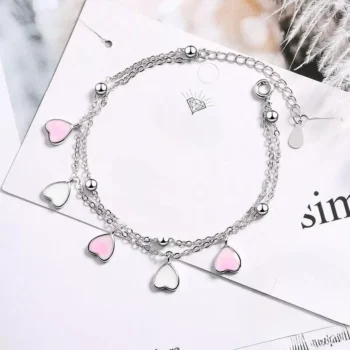Does 925 Sterling Silver Rust or Not? Here is the Answer
In the realm of jewelry and accessories, 925 sterling silver stands as a timeless choice cherished for its beauty and durability. However, a common query among silver enthusiasts and potential buyers often revolves around its susceptibility to rust. Does 925 sterling silver rust or not? Let’s delve into the intricacies to uncover the truth behind this enduring question.
Understanding 925 Sterling Silver
Before addressing its rusting tendencies, it’s essential to grasp what constitutes 925 sterling silver. In its pure form, silver is too soft to fashion into intricate jewelry pieces. To enhance its durability and strength, silver is alloyed with other metals, typically copper, resulting in sterling silver.
The “925” hallmark indicates that sterling silver comprises 92.5% pure silver and 7.5% other metals, predominantly copper. This alloying process not only fortifies the silver but also imbues it with a characteristic luster and resilience.
The Myth of Silver Rusting
Contrary to popular misconception, 925 sterling silver does not rust. Rusting, a process specific to iron and its alloys, occurs due to oxidation when exposed to moisture and air. However, silver tarnishes over time, which often leads to confusion.
Tarnish vs. Rust
Tarnish is a natural occurrence on silver surfaces, resulting from the metal’s reaction with sulfur compounds present in the air. This reaction forms a dark layer, known as tarnish, on the silver’s surface, imparting a dull appearance.
Unlike rust, tarnish does not corrode or degrade the integrity of 925 sterling silver. It merely affects its aesthetic appeal, which can be easily restored through routine maintenance and cleaning.
Factors Influencing Tarnish
Now, let’s address the question at hand: Does 925 sterling silver tarnish? The answer is Yes. While pure silver is less prone to tarnishing, the inclusion of copper in 925 sterling silver makes it more susceptible to tarnish. However, it’s essential to note that tarnish is a surface reaction and doesn’t affect the structural integrity of the metal.
Several factors contribute to the tarnishing of 925 sterling silver. Understanding these elements can help you minimize tarnish and keep your silver jewelry looking radiant for longer.
- Exposure to Air and Moisture: Silver tarnishes more quickly when exposed to air and moisture. To prevent tarnish, store your sterling silver jewelry in a cool, dry place and consider using anti-tarnish storage options.
- Contact with Chemicals: Chemicals present in everyday items such as perfumes, lotions, and cleaning products can accelerate tarnishing. It’s advisable to put on your silver jewelry after applying such products and to remove it before using household cleaners.
- Individual Body Chemistry: The pH levels of an individual’s skin can impact how quickly silver tarnishes. While this factor is beyond one’s control, being mindful of other influencing factors can help mitigate tarnish.
Preventing Tarnish and Maintenance Tips
While tarnish is a natural occurrence, there are proactive steps you can take to slow down the process and maintain the luster of your 925 sterling silver jewelry.
- Regular Cleaning: Gently clean your silver jewelry with a soft cloth to remove tarnish. Avoid abrasive materials, as they can scratch the metal.
- Anti-Tarnish Products: Use anti-tarnish products, such as storage bags or strips, to create a protective environment for your silver items.
- Proper Storage: Store your silver jewelry in airtight containers or zip-lock bags to minimize exposure to air and moisture.
- Avoiding Exposure: Remove silver jewelry before swimming, bathing, or engaging in activities that may expose it to harsh chemicals.
Conclusion
In conclusion, 925 sterling silver jewelry can tarnish over time due to its composition and exposure to certain environmental factors. However, with proper care and maintenance, you can significantly slow down the tarnishing process and enjoy the enduring beauty of your sterling silver jewelry.
By understanding the factors that contribute to tarnish and implementing preventive measures, you can ensure that your beautiful sterling silver jewelry remain a stunning and cherished part of your collection for years to come.




